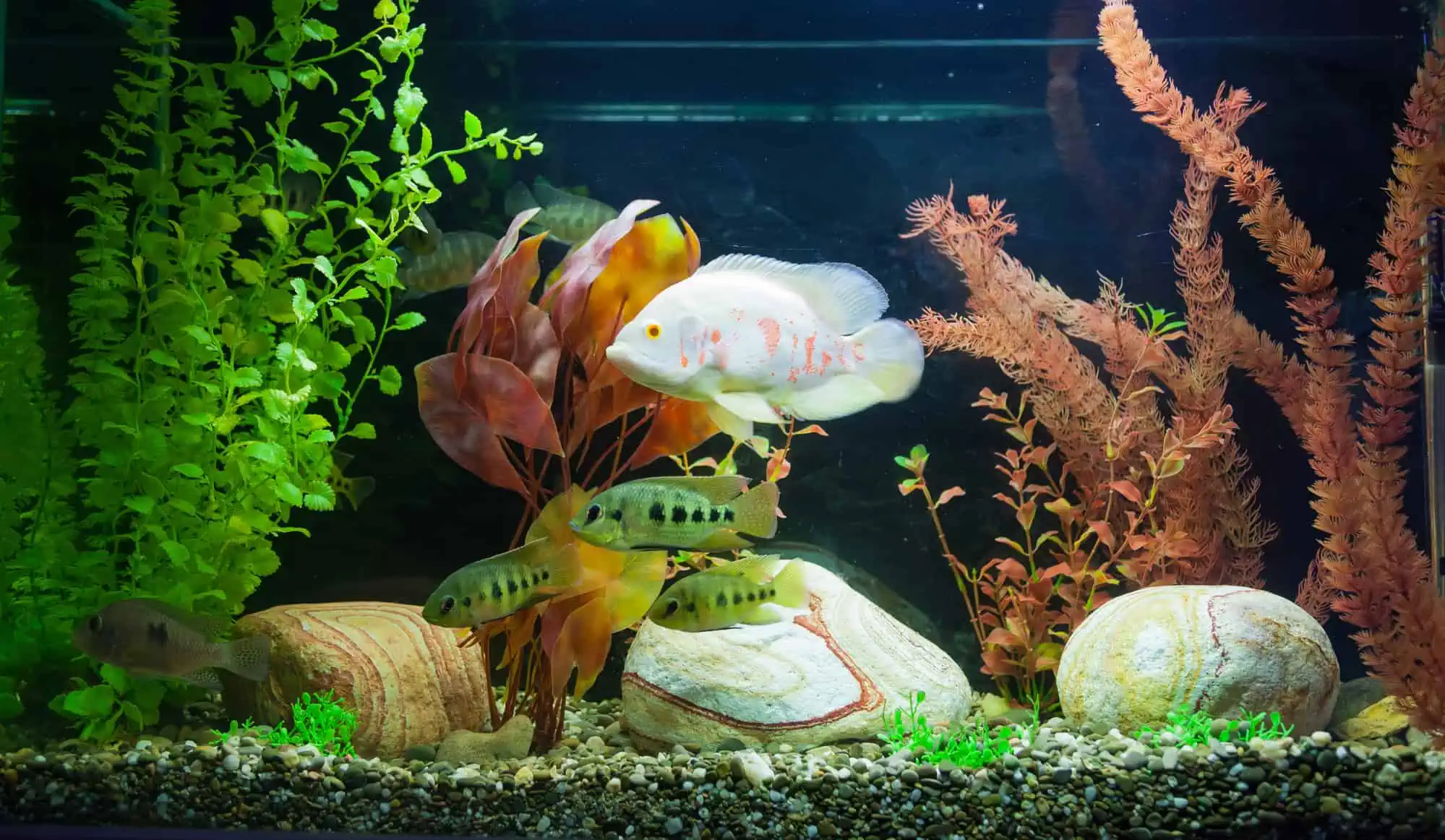Fishkeeping is an extremely rewarding hobby that can quickly become an obsession, and after 40 years of keeping many different fish species, I can vouch for that!
One of the most exciting aspects of keeping fish is deciding what species you want to put in your brand-new aquarium. Unfortunately, fish compatibility is something of a minefield, and getting it wrong can make or break the harmony of a community setup.
Choosing the wrong combination of fish can lead to stress, aggression, and even fatalities. So, I put together this guide to help you steer clear of those dreaded disasters! Keep reading to learn how to avoid the most common fish compatibility mistakes.
Key Takeaways
- Compatibility is key in fishkeeping; always research potential size differences, aggression levels, and habitat needs of fish to maintain aquarium harmony.
- Provide adequate space, hiding spots, and correct diets for different fish species to prevent stress, malnutrition, and aggression due to social hierarchies.
- Regularly monitor your tank’s population to avoid overstocking, and practice proper quarantine procedures for new fish to protect against disease outbreaks.
Size Matters
Most of the fish for sale in your local fish store or pet shop are juvenile specimens that have plenty of growing still to do. One of the most common mistakes made by novice aquarists is not realizing the potential size difference between fish species once their pets are fully grown.
Buying fish without considering that adult size will almost certainly result in overcrowding, aggression, and little fish becoming prey to larger tank mates.
For example, as a teenager, I had a fish tank given to me as a birthday present. I bought several little goldfish from my local pet shop and put them in my new aquarium. All was well until I decided to add a few ghost shrimp to keep the tank tidy and eat the algae growing there. At first, the shrimp did very well. But the goldfish kept growing, and one day, the shrimp vanished, having become lunch for the greedy fish!
So, always research the adult size of each species you want to keep to ensure they are compatible with your aquarium’s size and their tank mates.
Mixing Aggressive and Peaceful Species

Fish fall into two primary categories; peaceful and aggressive. Aggressive species will harass and nip more peaceful fish, causing stress and encouraging the victims to hide away.
Stress compromises the fish’s immune system, leaving the creature vulnerable to attack by parasites and bacteria. In addition, you want to enjoy watching your fish, and you can’t do that if your precious pets are too frightened to venture out and swim around their tank.
However, if you do end up with one fish that is aggressive toward others, be sure to provide plenty of hiding places in the form of caves, lush planting, and hardscaping so that more timid fish have somewhere to retreat to if threatened.
Neglecting Habitat Preferences
Fish come from diverse habitats, each having specific water parameters and environmental conditions. Your fish will thrive if you provide them with an environment that closely replicates their natural home. failing to research each species’ preferred conditions can lead to compatibility issues.
For example, if you combine fish that need different water temperatures or pH levels, the stress that causes will compromise their health.
So, always choose fish species with similar habitat requirements to create a harmonious, suitable ecosystem.
Overstocking the Tank

Overstocking happens when you try to cram too many fish into an aquarium, exceeding your tank’s capacity to support its inhabitants. The result is usually poor water quality, heightened aggression, and much more stress among the fish and other residents.
You can avoid overstocking your tank by calculating the appropriate fish-to-tank ratio based on the fish’s adult size and activity levels. If you do end up with too many fish, which can happen if you keep livebearers that are prolific breeders, ask your friends if they would like to take some of your overstocks. Alternatively, your local fish store might take a few fish from you.
As a last resort, you might have to buy a larger aquarium. In the meantime, carefully monitor the water conditions in your fish tank, and consider upgrading your filter system to a more powerful one.
Failing To Quarantine New Fish
Outbreaks of disease can kill your fish and lead to compatibility problems related to the stress caused by sickness.
For that reason, I highly recommend placing any new fish in a quarantine tank and observing them for signs of disease for at least two weeks before introducing the newbies to your main display aquarium. That way, you can treat any bacterial or parasitic infections until the fish are in good health and ready to join your existing healthy stock.
Mismatched Feeding Habits
Fish fall into three main categories; herbivores, carnivores, and omnivores. Each type of fish requires a different diet, although there can sometimes be a crossover. That means you will potentially need to offer several different types of food to cater to all the species you keep.
A lack of compatibility in feeding habits can lead to competition for food and even malnutrition or starvation among your tank residents. Before you go shopping for fish, research the dietary requirements for every species you’re considering keeping and try to choose compatible fish with similar feeding habits.
Ignoring Social Hierarchies

Many fish species, such as bettas and cichlids, can be highly territorial, and many others exhibit social hierarchies, especially during the spawning season.
Failing to recognize these natural behaviors can lead to high levels of stress and aggression within your community. Carefully research the social dynamics of your chosen fish species and be sure to provide lots of hiding spots and plenty of space to minimize potential conflicts. In addition, avoid keeping too many males of territorial species to reduce aggression and competition over females.
Adding Incompatible Tankmates
Although this one sounds like an obvious mistake, many people fail to consider a new fish species’ compatibility with their existing livestock. Some fish are known to be aggressive toward certain other species, so be sure to research potential tank mates carefully before diving in and making a purchase.
We’ve all been there, but don’t make impulse buys without consulting reputable sources, such as the experts here at Aquariadise, for advice and guidance.
Mixing Saltwater and Freshwater Species
When you first begin your fish-keeping journey, it’s easy to get confused. After all, there are literally dozens of fish to look at in your local fish store. Many have dazzling colors, others sport flamboyant finnage, and some look downright weird. To say you’re spoilt for choice is a massive understatement!
These days, many fish stores carry both freshwater and saltwater species, and it’s easy to make the mistake of picking the wrong one. Although some fish can live happily in a brackish environment, most are marine or freshwater creatures that can’t survive outside their natural habitat conditions.
Generally, marine fish are more brightly colored, larger, and much more expensive than freshwater species. But if you’re not sure what you’re looking at, always ask for assistance. The store staff will be pleased to give you expert advice.
Final Thoughts
Embarking on your first fish-keeping journey is undoubtedly an exciting time, but it’s essential to keep fish that are compatible to maintain a healthy and harmonious aquarium environment.
By avoiding these common fish compatibility mistakes and carrying out plenty of thorough research before adding any fish to your tank, you can create a thriving ecosystem that you can enjoy for many years to come.



